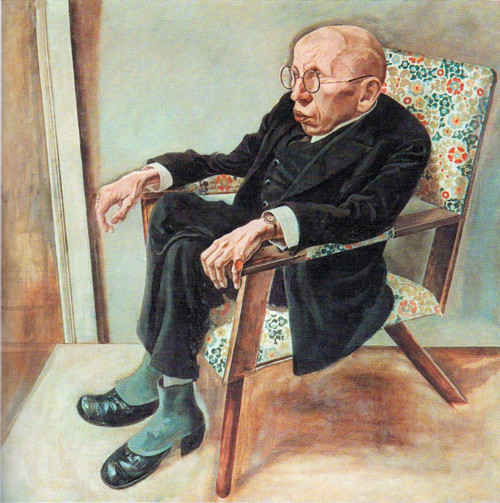The Eye of the World
10 Nov 2012 - 07 Apr 2013

George Grosz
Porträt des Schriftstellers Max Herrmann-Neisse, 1925
photo: Kunsthalle Mannheim
© VG Bild-Kunst, Bonn 2012
Porträt des Schriftstellers Max Herrmann-Neisse, 1925
photo: Kunsthalle Mannheim
© VG Bild-Kunst, Bonn 2012
THE EYE OF THE WORLD
Otto Dix and the New Objectivity
10 November 2012 - 7 April 2013
Different exhibitions and research projects are currently making the New Objectivity the center of attention. In Stuttgart, the Kunstmuseum uses its important collection of works by Otto Dix as a basis to understand this style as a major artistic language in modernism. Otto Dix self-confidently seized upon one of the great currents of twentieth-century art: »The New Objectivity, I invented that.«
The exhibition brings together around 120 works to investigate what characterizes the New Objectivity and how variously the term has been used and interpreted since the 1920s. At the time, conservative and progressive artists alike adopted its visual language. Otto Dix, with his portraits and radical images of society and war, created key examples of this new aesthetic, caricaturing and criticizing the conditions of the Weimar Republic. Even after 1933, Dix continued working in the style of the New Objectivity in his landscapes. One focus of the exhibition is a direct comparison between Dix and artists such as Christian Schad, George Grosz, Rudolf Schlichter, Werner Peiner, Franz Radziwill, Georg Scholz, and Franz Lenk, which illuminates the different reactions to the National Socialist aesthetic and art policy.
Otto Dix and the New Objectivity
10 November 2012 - 7 April 2013
Different exhibitions and research projects are currently making the New Objectivity the center of attention. In Stuttgart, the Kunstmuseum uses its important collection of works by Otto Dix as a basis to understand this style as a major artistic language in modernism. Otto Dix self-confidently seized upon one of the great currents of twentieth-century art: »The New Objectivity, I invented that.«
The exhibition brings together around 120 works to investigate what characterizes the New Objectivity and how variously the term has been used and interpreted since the 1920s. At the time, conservative and progressive artists alike adopted its visual language. Otto Dix, with his portraits and radical images of society and war, created key examples of this new aesthetic, caricaturing and criticizing the conditions of the Weimar Republic. Even after 1933, Dix continued working in the style of the New Objectivity in his landscapes. One focus of the exhibition is a direct comparison between Dix and artists such as Christian Schad, George Grosz, Rudolf Schlichter, Werner Peiner, Franz Radziwill, Georg Scholz, and Franz Lenk, which illuminates the different reactions to the National Socialist aesthetic and art policy.
